Fleurs du Mal Magazine


Or see the index
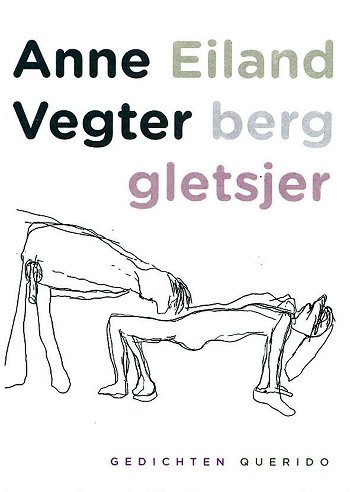
Anne Vegter
nieuwe Dichter des Vaderlands
Met ingang van vandaag, Gedichtendag – 31 januari 2013, is de Rotterdamse dichteres Anne Vegter (1958) Dichter des Vaderlands. Vegter is aangesteld op voordracht van een breed samengestelde benoemingscommissie. Zij is de eerste vrouw die na de dichters Gerrit Komrij, Driek van Wissen en Ramsey Nasr het ereambt van Ambassadeur voor de Vaderlandse poëzie voor haar rekening neemt. Tijdens het afscheidsconcert van scheidend Dichter des Vaderlands Ramsey Nasr met het Metropole Orkest in Paradiso zal Anne Vegter vanavond rond 22.00 uur officieel door haar voorganger worden geïnstalleerd. De ambtsperiode van Anne Vegter als Dichter des Vaderlands loopt tot en met januari 2017. Het Dichterschap des Vaderlands is een initiatief van Koninklijke Bibliotheek, NRC Handelsblad, NTR, Poëzieclub en Poetry International.
De benoemingscommissie, bestaande uit dichter Maria Barnas, programmamaker en poëziebloemlezer Arie Boomsma, literair criticus Arjen Fortuin (NRC), dichter en journalist Piet Gerbrandy, schrijfster Kristien Hemmerechts en politica Mei Li Vos, kwam unaniem tot de voordracht van Anne Vegter. De commissie noemt haar ‘een uitermate veelzijdig dichter en schrijver wiens maatschappelijk engagement niet nieuw is en met de jaren steeds sterker lijkt te worden’. In haar gedichten heeft Vegter niet de neiging wat dan ook te verbloemen, wat haar poëzie soms ongemakkelijk maakt zonder daarmee ontoegankelijk te zijn. ‘Vanwege haar open blik en indringende taal, omdat zij een brug kan slaan naar theater en beeldende kunst en omdat ze ook kinderen voor zich zal weten te winnen, is Anne Vegter de perfecte Dichter des Vaderlands,’ aldus de commissie.
Anne Vegter wil haar nieuwe functie gebruiken om ‘vrijheid van denken te heroveren en poëzie inzetten als radicaal middel tegen de dominantie van politiek- economisch taalgebruik ten faveure van de verbeelding.’ Energiek gaat ze deze uitdaging aan door het individu op zijn meest persoonlijke manier te laten spreken, door vragen te stellen en onderzoekend te zijn in plaats van mening gevend. Anne Vegter mikt op een brede verspreiding van poëzie met de nadruk op educatieve projecten in combinatie met kritische kunstzinnige acties. Zij zal zich daarbij niet beperken tot de Randstad maar het hele land laten profiteren van haar activiteiten.
Met de DdV-Tourband gaat Vegter in het voorjaar van 2014 op reis langs al die regio’s en plaatsen waar door bezuinigingen bibliotheken en culturele centra zijn verdwenen. Vegter gaat bovendien op speurtocht door de moderne poëzie, ‘om al ingeslapen, wonderschone gedichten van nog geen tien, twintig, dertig jaar oud wakker te kussen.’ Ook zal Vegter initiatief nemen om het schrijven van poëzie te populariseren en tegelijk het niveau te verhogen. Moderne media zal zij bij haar activiteiten als Dichter des Vaderlands combineren met flashmobs of oeroude middelen als spreekkoren. Tot slot streeft Vegter ernaar ook internationaal de Nederlandse poëzie te vertegenwoordigen door ontmoetingen met collega Poet Laureates.
NRC Handelsblad publiceert vandaag een uitgebreid interview met Anne Vegter, vanaf 12.30 uur in de digitale editie en later op de dag in de papieren editie. Voor de officiële inhuldiging van Vegter tijdens ‘Ramsey Nasr in concert met het Metropole Orkest’ in Paradiso zijn nog kaarten verkrijgbaar via de website van Paradiso. Vanavond rond 22.00 uur zendt Nieuwsuur op Nederland 2 een portret uit van Anne Vegter, tussen 23.00 en 00.00 uur gaat zij in Met het oog op morgen op Radio 1 in gesprek met Rob Trip.
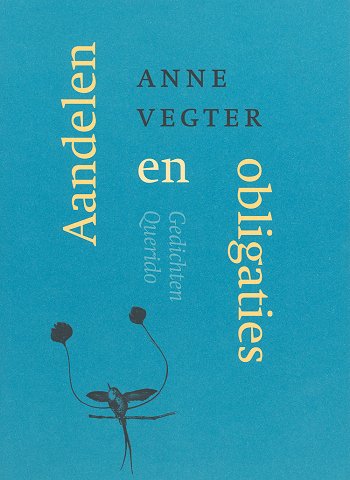
Verantwoording Benoemingscommissie
AAN DE SCHOUDERS VAN BOODSCHAPPENMENSEN
Anne Vegter wordt Dichter des Vaderlands
Het is geen eenvoudige opgave, poëzie schrijven over zaken die de samenleving bezighouden. Waar veel dichters van nature de neiging hebben zich op te sluiten in een particuliere, soms regelrecht hermetische wereld, moet de Dichter des Vaderlands een groot publiek kunnen raken zonder het eigen dichterschap te verraden. Na Gerrit Komrij, Driek van Wissen en Ramsey Nasr, die elk op geheel eigen wijze invulling aan het ambt hebben gegeven, zal Anne Vegter de komende jaren Dichter des Vaderlands zijn. Het werd hoog tijd dat een vrouw de taak op zich nam.
Anne Vegter (1958) is een uitermate veelzijdig dichter en schrijver. In 1989 debuteerde ze met het kinderboek De dame en de neushoorn, dat prompt bekroond werd met de Woutertje Pieterseprijs. Haar eerste dichtbundel, Het veerde (1992), liet zien dat er een dichter van formaat was opgestaan. Ettelijke kinderboeken volgden, een bundel erotische verhalen en enkele toneelstukken, maar in alle genres die zij beoefent schemert door dat Vegter in de eerste plaats een dichter is. Zelfs in haar tekeningen.
Vegter schrijft geen gemakkelijke poëzie. Niet dat haar werk ontoegankelijk zou zijn, integendeel, maar zij heeft niet de neiging wat dan ook te verbloemen. Haar meest recente bundel, Eiland berg gletsjer (2011), spaart de lezer niet. Vriendschap, huwelijk en seks, aftakeling en verlies, op zichzelf geen uitzonderlijke onderwerpen, worden door Vegter op dermate confronterende wijze uitgebeend dat ze de lezer naar adem doet happen. Maar ze stelt ook veel grotere kwesties aan de orde. In een lange monoloog ondergraaft de dochter van Noach de fundamenten van het patriarchaat en de christelijke traditie door haar vader te doden en te ontmannen. Dat gedicht eindigt overigens paradoxaal:
een dichter zei:
je kunt god dood verklaren maar
daarmee is de naam nog niet verdwenen
Het cultuurhistorisch bewustzijn, of, zo men wil, maatschappelijk engagement van Vegter is niet nieuw, al lijkt het met de jaren wel sterker te worden. De titel van de bundel Aandelen en obligaties (2002) suggereert al dat economisch en financieel denken is doorgedrongen tot in alle uithoeken van de persoonlijke levenssfeer. In Spamfighter (2007) schrijft ze, in de ogenschijnlijk achteloze stijl die haar handelsmerk vormt:
Zoals aan de schouders van boodschappen-
mensen de avond hangt, daar kan ik iets mee.
We hebben verdiend, gezocht, gekocht, tijd
gerekt, instemmend geknikt bij thuisblijven.
Niemand ontkomt aan de tredmolen van het consumeren, en misschien zit daar meer poëzie in dan je op het eerste gezicht zou vermoeden. Is de dichter niet bij uitstek een ‘boodschappenmens’? ‘Het werd,’ staat er, ‘die dag weer zaterdagavond met kans / op zingeving’.
Eenduidige politiek zul je bij Vegter niet aantreffen, maar regels als deze, uit Eiland berg gletsjer, nodigen uit tot een debat over opvoeding en moreel bewustzijn:
mijn vader zei dat ik niet moest opvallen tijdens het groeien en ik at zonder gewicht
zijn vader zei dat de man die zijn land verraadt vergeving verkoopt voor ovens
‘Of het tijd kost Anne Vegter te zijn’, zo begint het gedicht ‘Meten & wegen’. Het antwoord is genuanceerd: ‘Het kost niet per se tijd maar het hoofd […] puilt uit.’ Haar creativiteit is immers onuitputtelijk. Maar lezers ‘zoeken iemand om in uit te rusten’. Waarschijnlijk zijn ze aan het verkeerde adres bij een dichter die liever wakker schudt dan in slaap sust.
Vanwege haar open blik en indringende taal, omdat zij een brug kan slaan naar theater en beeldende kunst en omdat ze ook kinderen voor zich zal weten te winnen, is Anne Vegter de perfecte Dichter des Vaderlands.
Namens de benoemingscommissie,
Piet Gerbrandy
De benoemingscommissie voor de Dichter des Vaderlands 2013 – 2016 bestond uit Maria Barnas, Arie Boomsma, Arjen Fortuin, Piet Gerbrandy, Kristien Hemmerichts en Mei Li Vos en werd geadviseerd door Ramsey Nasr.
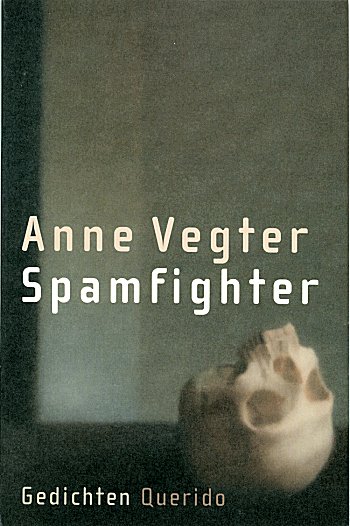
Anne Vegter – Biografie
“Slap van de lach hangen wonderen over tafel, niet eens helemaal uitgevouwen.”
(Bekentenis uit Spamfighter, 2007)
Al meteen vanaf haar eerste gedichtenbundel Het veerde uit 1991 werd de stijl van Anne Vegter als springerig gekenschetst. Het was niet haar eerste boek. De kinderboeken De dame en de neushoorn uit 1989 en Verse bekken uit 1990 gingen daaraan vooraf en ook die boeken vielen op door een vrije en levendige stijl. Anne Vegter schrijft grillige poëzie, zo viel regelmatig te lezen, die enerzijds surrealistisch en droomachtig kan worden genoemd, maar net zo goed verontrustend en raadselachtig. Kwalificaties overigens die allemaal in positieve zin worden gebruikt. Sommigen vinden het raadsel en de grilligheid wat teveel, maar de meeste critici prijzen het avontuur en de overrompeling die met dat raadsel en die grilligheid meekomt.
Wat je weinig las en leest is dat de stijl van Anne Vegter en haar manier van formuleren en structureren van met name haar poëzie (maar ook haar toneelwerk en kinderboeken) zo goed laat zien hoe mensen gewoonlijk denken; en dan bedoel ik vooral het denken tussen de bedrijven door, in alledaagse omstandigheden, zoals tijdens de afwas, tijdens het doen van boodschappen, in bed, in de sportschool, onderweg of tijdens gesprekken. Natuurlijk, niet letterlijk, want Vegter is een dichter die heel precies weet te stileren en een dramatisch accent aan haar zinsopvolging weet te geven. Maar hoe doorwrocht en geladen de regels ook worden, het ongerijmde denken blijft er altijd herkenbaar in.
Bijzonder is dat dit hardop denken niet alleen eigenzinnig en speels is, maar in vrijwel elk gedicht tot de nodige kernachtige uitspraken over het leven leidt; uitspraken over onderwerpen waarover we nooit uitgesproken raken omdat ze ons te boven gaan: hoe moet ik leven, hoe reageer ik op een ander, waar vind ik liefde, wat doen pijn en genot met ons, ben ik alleen of niet?
“Ik dacht eigenlijk aan vier situaties, liefst pijnlijke natuurlijk
of plaatselijke ongemakken en ook wel: hoe zij dat deed.”
(Plaatselijke ongemakken uit Aandelen en obligaties, 2002)
“Net voorbij het hek hielden we elkaar scherp in het oog
maar iedereen zweeg, zoals vaker bij doden.”
(Moratorium uit Spamfighter, 2007)
“Zijn de coördinaten waarop jij je bevindt veranderlijk
reis dan minder grillig.”
(Wisselende posities uit Spamfighter, 2007)
Het zijn allemaal aspecten van de vraag hoe te leven in de zekerheid van een aantal onopgeloste vraagstukken, zoals Ilja Pfeijfer schreef naar aanleiding van Anne Vegters’ bundel Spamfighter. Wat een dichter met die vraag of die vraagstukken ook doet, weinigen zullen het lef hebben er zo onverbloemd en direct over te schrijven. Er is een hoop dat pijnlijk is, dat onbegrijpelijk is, dat erom vraagt bestreden en soms ook gekoesterd te worden en Anne Vegter maakt dit op niet mis te verstane wijze duidelijk. Ze toont zich daarin tegelijk een moedig en een kwetsbaar dichter. Moedig omdat ze niet kiest voor keurig opgeruimde en ingerichte gedichten, kwetsbaar omdat de directheid van haar taal als banaal kan worden afgedaan of dat alle uitspraken die ze doet als een persoonlijke bekentenis van de persoon Anne Vegter wordt beschouwd, in plaats van als door de dichter Anne Vegter gekozen woorden en zinnen.
Als Anne Vegter het gedicht Meten & wegen (uit haar laatstverschenen bundel Eiland berg gletsjer) waarin ze het over Anne Vegter heeft, afsluit met de zin “Lezers zoeken iemand om in uit te rusten”, dan toont ze zich zowel bewust van die twee rollen als van de mogelijke reactie van poëzielezers op die dubbele positie. Waarschijnlijk zijn ze bij haar (of Anne Vegter) aan het verkeerde adres, schreef Piet Gerbrandy naar aanleiding van die zin, want Anne Vegter (of zij) is een dichter die liever wakker schudt dan in slaap sust. Hoe waar dat ook is, alles in dat wakker schudden klopt ook en al helpt dat het uitrusten niet, het levert de lezer een poëtische waarheid op waar je ieder dag opnieuw mee vooruit kunt. “Gisteren zei iemand het past of fluit ernaar” schreef Anne Vegter in hetzelfde gedicht. En zo is het maar net.
fleursdumal.nl magazine
More in: Archive U-V
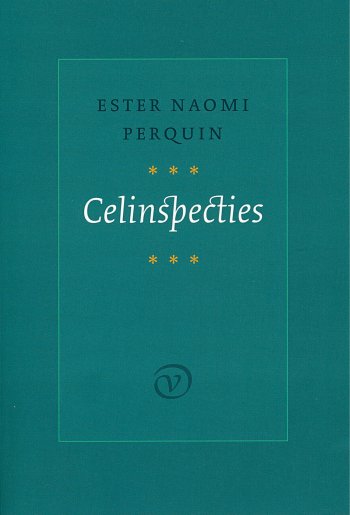
VSB POËZIEPRIJS 2013 voor
Ester Naomi Perquin
De VSB Poëzieprijs 2013 is toegekend aan Ester Naomi Perquin. Perquin krijgt de jaarlijkse prijs voor de beste Nederlandstalige dichtbundel voor haar bundel Celinspecties, uitgegeven bij Uitgeverij Van Oorschot. Aan de prijs is een geldbedrag van 25.000 euro verbonden en een glaskunstwerk van kunstenares Maria Roosen. Perquin ontving de prijs op 30 januari tijdens een feestelijke avond uit handen van juryvoorzitter Saskia J. Stuiveling. Voor de VSB Poëzieprijs 2013 werden ook de dichters H.H. ter Balkt, Luuk Gruwez, Sybren Polet en Menno Wigman genomineerd.
De jury van de VSB Poëzieprijs roemt de verraderlijk luchtige toon en de onvoorspelbare wendingen waarmee Perquin een gelaagde ruimte in haar bundel schept. ‘Het taalgebruik is soms soepel als spreektaal, dan weer geraffineerd en virtuoos. De dichter neemt de lezer aan de hand en laat hem net zo gemakkelijk struikelen, wanneer haar woorden dat nodig hebben. (…) Als de dichter al een taak heeft, laat het dan die zijn die Perquin zich heeft opgelegd: zichtbaar maken van wat obscuur en meestal verborgen blijft. Dit blijven proberen, ook wanneer je tegen de grenzen van het zichtbare en van de taal aanloopt. In het geval van Celinspecties levert het een bundel op van noodzaak, verlangen en schitterend mislukken.’
Juryleden Maria Barnas, Geert Buelens, Patrick Lateur, Anthonya Visser en Saskia J. Stuiveling selecteerden in november 2012 de vijf genomineerden uit vijfenzeventig ingezonden bundels die allen tussen 1 september 2011 en 31 augustus 2012 verschenen. Uit alle ingezonden bundels koos juryvoorzitter Saskia J. Stuiveling haar 100 favoriete gedichten voor de bloemlezing De 100 beste gedichten. De uitgave van De Arbeiderspers en Stichting VSB Poëzieprijs werd tijdens de uitreiking gepresenteerd.
fleursdumal.nl magazine
More in: Archive O-P

Bedrijf
Schaduwloos theater. In kasten onder de planken
vlaggen met verschoten symbolen. Er zouden
kaarsen. En gazen kousen. Beloofd was zindering,
wortel en tak. Maar alles verloopt stroef, en koel
als een lege trombone. Het wachtwoord: onschuld.
Wat buiten herfst met bramen doet. Alles in de gaten.
In de bedding van het zwijgen ligt het wijzen.
Bert Bevers
verschenen in Uit de herinneringen van een souffleur, Uitgeverij Kleinood & Grootzeer, Bergen op Zoom, 2006
More in: Archive A-B, Bevers, Bert
![]()
Beaconstructor
Ik herinner me vooral
de chaos in Amsterdam
toen u de troon aannam
krakersrellen rookbommen
spontaan rondvliegende
straatstenen helicopters
die laag over de stad vlogen
je kunt het je nu bijna niet
meer voorstellen het volk
onderbrak zijn staatshoofd
meermaals dat was uw moeder
en u onderging uw lot toen al
met statigheid majesteit
u bouwde verder aan de
erfenis van de generaties
het viel in het begin niet
eens op eerst was er crisis
toen klommen we daar weer
langzaam uit we namen u
slinks nog wat macht af en
het was altijd uw statigheid
majesteit baken van rust
pas in de laatste jaren zagen
we u naast vorstin steeds meer
vrouw worden u bracht uw ouders
naar het graf waar u eerder al uw man
de prins bracht u deed dat met
waardigheid majesteit en na dat ongeluk
met uw zoon was het voor u wel klaar we
begrijpen het u zult de geschiedenis
ingaan zodra we afscheid hebben genomen
statigheid waardigheid majesteit.
Martin Beversluis
29-01-2013
kempis.nl poetry magazine
More in: Archive A-B, Beversluis, Martin


Eerste nationale Gedichtenbal in Amsterdam
Grootse afsluiting Poëzieweek met o.m. Remco Campert en Ramsey Nasr
Vanaf januari 2013 bundelen bekende poëzie-evenementen als Gedichtendag, de VSB Poëzieprijs en Turing Nationale Gedichtenwedstrijd hun krachten in de Poëzieweek. De week begint op donderdag 31 januari 2013 met Gedichtendag en eindigt op woensdag 6 februari met het eerste nationale Gedichtenbal.
Op deze feestelijke en gratis toegankelijke avond treden ruim honderd dichters en muzikanten op in de Stadsschouwburg Amsterdam. Met onder meer: de finale van de Turing Nationale Gedichtenwedstrijd, de nieuwe Dichter des Vaderlands en de winnaar van de VSB Poëzieprijs. Remco Campert draagt voor, Nico Dijkshoorn eert het hammondorgel en P.F. Thomése stelt nieuw dichttalent voor. Gerrit Komrij wordt herdacht door o.a. Hans Dagelet, Ramsey Nasr en Victor Schiferli. Yori Swart en Janne Schra zingen poëzie. Stadsdichters Menno Wigman, F. Starik en Ester Naomi Perquin treden samen op. Geniet bij silent poetry van Erik Jan Harmens, Jannah Loontjens, Vrouwkje Tuinman, Kira Wuck, Delphine Lecompte, Saskia de Jong en vele anderen. Tjitske Jansen, Ted van Lieshout, Tsead Bruinja e.a. sluiten hun dichterstournee af. Ellen Deckwitz en Dennis Gaens battelen in pop vs. poetry. Rap en poëzie komen samen in de voorstelling Lucy. NOS Met het Oog op Morgen zendt live uit. Das Magazin, de literaire stoelendans en de Avierkoerier zijn van de partij, evenals nog veel meer verrassingsprogramma’s!
Het Gedichtenbal sluit aan bij het overkoepelende thema van de Poëzieweek: muziek. Het gedichtenbal wordt georganiseerd en mogelijk gemaakt door Literair Productiehuis Wintertuin, Stichting CPNB, Poetry International, Stichting Lezen, Poëziecentrum, VSB Poëzieprijs, Poëzieclub, Turing Nationale Gedichtenwedstrijd, Das Magazin, SLAA, SNS Reaal Fonds, NOS Met het Oog op Morgen, Lira Fonds en De Nieuwe Liefde.
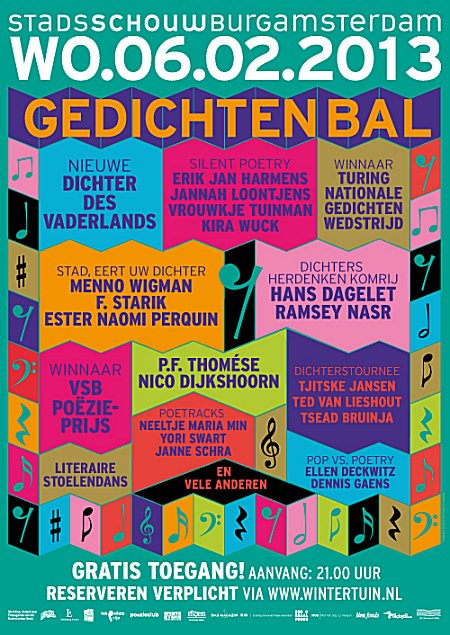
GEDICHTENBAL
Datum: woensdag 6 februari 2013
Locatie: Stadsschouwburg Amsterdam, Leidseplein 26
Deur open: 20.30 uur
Aanvang: 21.00 uur
Entree: gratis
Reserveren: verplicht via www.wintertuin.nl/gedichtenbal
Reservering geldig tot: 21.30 uur (daarna vrije inloop mits er nog plek is)
Literair Productiehuis Wintertuin maakt producties op het snijvlak van literatuur en andere kunsten, organiseert festivals, programma’s en educatieprojecten, begeleidt schrijftalent en geeft eigenzinnige publicaties uit. Samen met theater- en dansproductiehuis Generale Oost en popproductiehuis Oost-Nederland vormt Literair Productiehuis Wintertuin productiehuis De Nieuwe Oost.
Literair Productiehuis Wintertuin
Postbus 1009, 6501 BA Nijmegen
fleursdumal.nl magazine
More in: Campert, Remco, Lieshout, Ted van, Poëzieweek, Remco Campert, Ted van Lieshout, The talk of the town, Wigman, Menno
Carina vd
Walt
luchtalarm
plotseling & ook niet
telkens weer opnieuw om 12 uur
stoppen mijn vingers met typen
beginnen hun tippen te prikken
een boos verschrikt geloei
boort door mijn hoofd
van dichtbij, van verder &
van alle kanten uit de stad
Ik wroet in mijn ingewanden:
met een Joods Roodkapje, vluchtend voor de SS-soldaten
met een gloeiend Viëtnamees meisje, naakt voor een napalmbom uit
met een Palestijnse jongen, onderweg naar zijn oma omgekomen in een autobomaanslag
met de onschuld van de kindsoldaten – Kadago – tot wolven getraind in de DR Congo
met Peace & Mpo & Lerato voor de kogels van de angstige heks ApartheidsAfrikaans.
de akelige aanzwellende toon stoot
een klont zuur op tegen mijn tanden
zodat ik moet slikken tegen
de krop in mijn keel
de oproep naar terug in
kelders onthoofdt me
ik word een & al lijf
oogst alleen maar angst
Ik wroet in mijn ingewanden
met een gierende aarde die haar miskende moederschap brullend terugeist:
een hongersnood in Soedan, waar een kindje eerbiedig buigt voor haar gulzige gier
een tsunamigolf, vraatzuchtig met een drijvend groepje Japanse klasgenootjes
een aardbeving, die duizenden Chinese scholiertjes 80 uren stof laat eten –
& dan, onwillig, eentje teruggeeft.
Carina van der Walt
fleursdumal.nl magazine
More in: Archive W-X, Carina van der Walt, Walt, Carina van der

Mireille Havet
(1898-1932)
Adieu à la Touraine
À Christiane et à Paul Aeschimann
Ah ! c’est bien tentant de se casser la figure
et d’épanouir son sang sur la terre dure !
Par la fenêtre ouverte : se jeter !
Mourir !
Et le crépuscule laisse monter la lune.
Touraine ! Terre de nos rois,
cœur de France, qu’entoure la guerre
comme un serre-téte sanglant
Touraine !
Tu te mires dans la rivière
avec le croissant de la lune nouvelle.
J’ai vu ton soleil s’évanouir sur la forêt,
glisser avec langueur le long des troncs ambrés,
répandre avec volupté
l’amour de ses flancs dilatés
par cette dernière étreinte d’Automne,
et les rivières, à travers Toi ! Touraine !
à travers toi ! ma France !
s’en vont claires comme des veines
sillonnant tes champs de gais reflets d’argent.
Voici le dernier soir !
La vie nouvelle réclame à chaque instant
une ferveur nouvelle,
et c’est déjà le Départ.
Dernier soir campagnard, ma douleur est intense.
Touraine qui m’as reçue pendant un an de guerre,
à Toi j’adresse ce soir
un dernier appel et une dernière prière.
Tu ne m’as pas trop donné, Touraine !
j’ai su te comprendre et j’ai su t’aimer.
Belles chevauchées des rois à travers la forêt,
vous hantez mes rêves et je pars à regret.
Mais ainsi…..
La guerre perpétuelle aiguise ma nostalgie.
C’est la vie que j’appelle !
Que la mort soit bannie !
Toute ma force se révolte en te contemplant
ma terre !
Toi que l’on a voulu prendre,
que l’on a voulu enlever à ma jeunesse
et que j’aime d’un amour illimité !
Les voitures passent sur le pont.
La roue du moulin tourne près du pont.
J’entends son rythme lent
et le saut des poissons (sous le pont).
Tout cela va finir.
C’est le dernier soir.
Je ne verrai plus le jardin provincial
avec ses fouillis d’herbe
et son grand ciel d’étoile.
Éperdument je me rejette dans la vie bourdonnante,
dans Paris : ma ville fascinante.
Mais le triste attrait de ce que l’on quitte
me retient en arrière…
Ah ! faiblesse ! Mauvaise constitution de l’homme
en face de l’Avenir !
Il faut partir,
Éternellement quitter.
Le but n’est pas ici. Il est beaucoup plus loin,
derrière la mort, — en dehors de l’atteinte de nos mains
Mais que ce serait bon de l’atteindre tout de suite,
avant d’être fatigué par les nombreuses étapes !
De l’atteindre en pleine force,
du haut de cette fenêtre,
et d’épanouir son sang
dans le sang de l’Automne,
de la guerre perpétuelle
et du canon qui tonne !
Ah ! le désir de vivre est encore le plus fort !
Je suis liée à mes dix-sept ans par un sort
et Je ne peux me sauver…..
France, sur toi, sur ton poitrail calme,
mais cerné de frontières enflammées,
je m’écrase ce soir !
flambante, Moi aussi, du désir de savoir !
Sur cette calme Touraine que je domine
de toute ma destinée incertaine,
je m’appuie pour commencer ma Vie !
Base de terre qui ne croulera pas
sous le poids de ma jeunesse,
tu seras mon point de départ,
et ton ciel verse en moi
toute l’allégresse
qui berça nos rois !
Revue Le Mercure de France n°431 (1er juin 1916)
Mireille Havet poetry
kempis.nl poetry magazine
More in: Archive G-H, Havet, Mireille

Henry Bataille
(1872-1922)
Les souvenirs
Les souvenirs, ce sont les chambres sans serrures,
Des chambres vides où l’on n’ose plus entrer,
Parce que de vieux parents jadis y moururent.
On vit dans la maison où sont ces chambres closes.
On sait qu’elles sont là comme à leur habitude,
Et c’est la chambre bleue, et c’est la chambre rose…
La maison se remplit ainsi de solitude,
Et l’on y continue à vivre en souriant…
Henry Bataille poetry
kempis.nl poetry magazine
More in: Archive A-B, Bataille, Henry
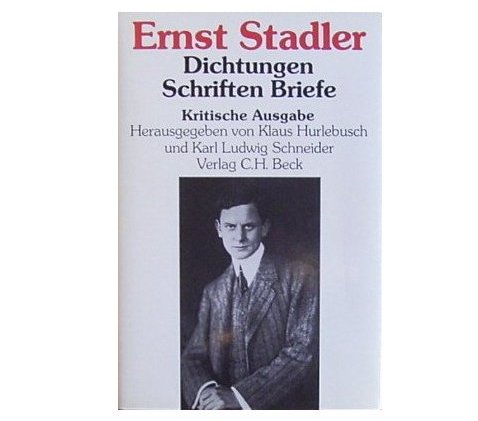
Ernst Stadler
(1883-1914)
Dunkle Fahrt
Die alten Brunnen rauschten wie im Traum
durch fernen Hall vertrauter Abendglocken
und flossen weich ins Dunkel· das den Duft
nachtschwüler Gärten· die ich spät durchwandert·
still atmend trug. Nun tut sich dämmernd auf·
vom schwanken Frühlicht hingetürmt· umwölbt
von Felsenstürzen· purpurtiefen Schluchten·
der letzten Fahrten letzte Ruhestatt:
Mit schwarzem Strom die goldig dunkle Trift.
Die kalten Eisenstufen schreit ich leicht
die leise klirrenden ins Tal· daraus
nicht Rückkehr ist. Nun bette mich
in blauen Schatten blütenloses Land·
traumstarre Flut!
Schonrührt dein schwerer Hauch
mich schauernd an. Schon überweht ein Glanz
mich Trunknen hell wie einer Gottheit Bild
aus blitzendem Gewölk. Schon trübt und wirrt
des Lebens Spiegel fern sich wie ein Traum·
der flatternd zwischen Tag und Dämmer lischt.
1904
Ernst Stadler poetry
kempis.nl poetry magazine
More in: *War Poetry Archive, - Archive Tombeau de la jeunesse, Archive S-T, Archive S-T, Stadler, Ernst

Vincent Berquez © painting: St Vincent de Paul
kempis.nl poetry magazine
More in: Berquez, Vincent, Vincent Berquez

Voorspel
Voor de eerste repetitie ligt het podium er verlaten
bij, als het Bos van Wallers tussen mei en maart.
Scenario, nog zonder inkt in de marge, kreukloos
in de tas. Op het lijf. Rollen komen mij aangestaard
en stamelend nabij, ik zie ze langzaam bloed en vlees.
Aktes. Het omslaan van mijn blad voelt fijner steeds.
Coupures. Daar zit ik dan, orakelend voor intimi.
Bert Bevers
verschenen in Uit de herinneringen van een souffleur, Uitgeverij Kleinood & Grootzeer, Bergen op Zoom, 2006
More in: Archive A-B, Bevers, Bert
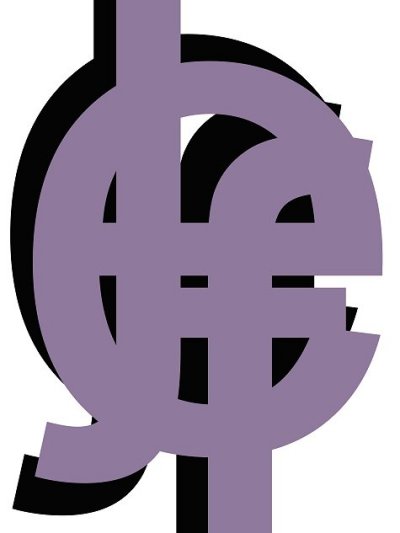
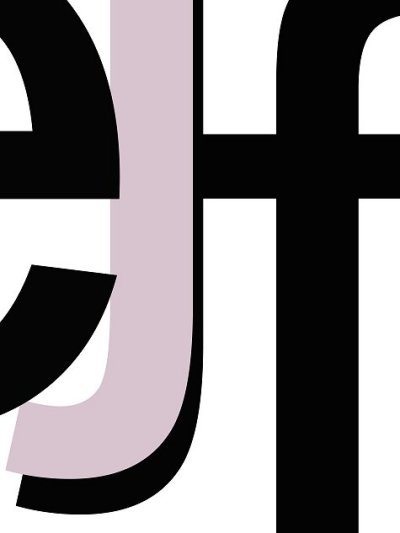
Freda Kamphuis
2 naamwerken voor Jef ©2012 collages
kempis.nl poetry magazine
More in: Freda Kamphuis, Kamphuis, Freda
Thank you for reading Fleurs du Mal - magazine for art & literature